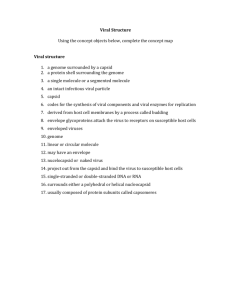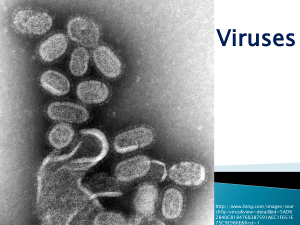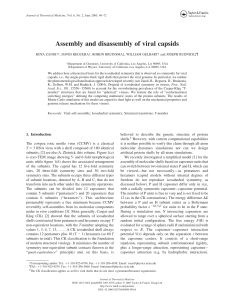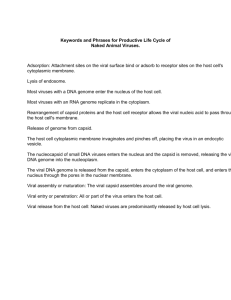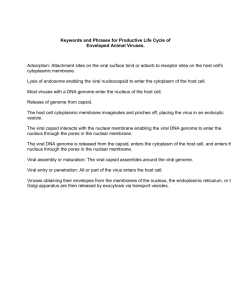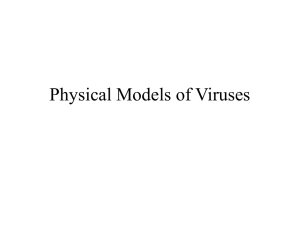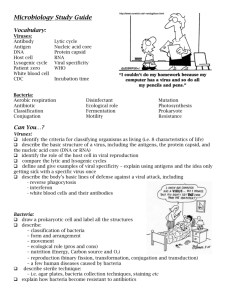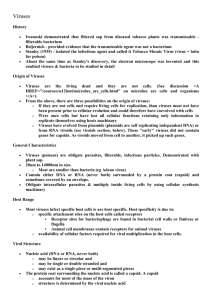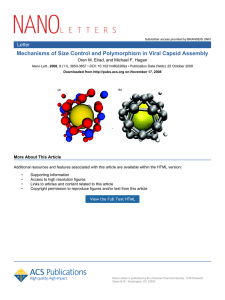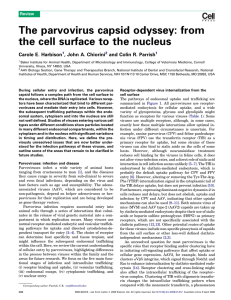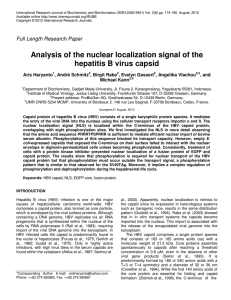3.22 Mechanical Properties of Materials
advertisement
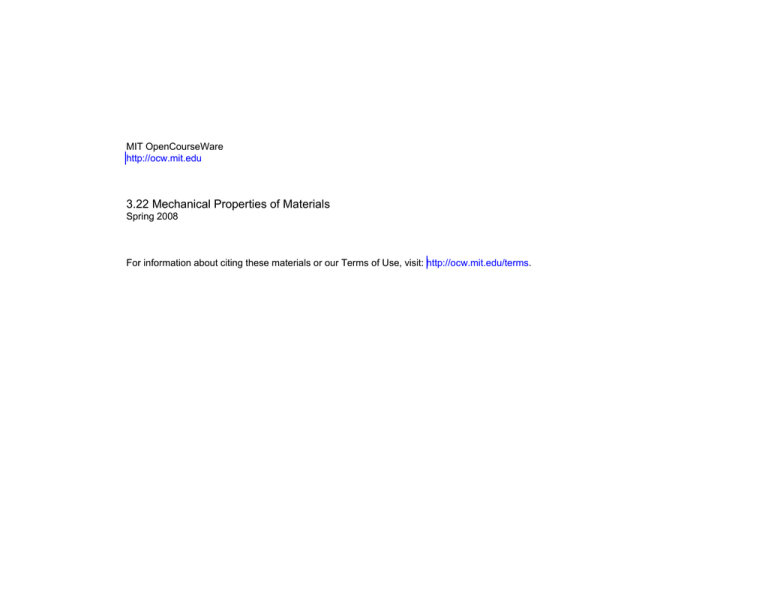
MIT OpenCourseWare http://ocw.mit.edu 3.22 Mechanical Properties of Materials Spring 2008 For information about citing these materials or our Terms of Use, visit: http://ocw.mit.edu/terms. Mechanical Behavior of a Virus Agustin Mohedas, Kevin Huang, Heechul Park, Jing (Meghan) Shan MIT Department of Materials Science and Engineering Cambridge, MA 02139 USA 3.22 Mechanical Behavior of Materials May 2008 Big Picture • Phenonmenon: Failure of viral capsids • Viral capsids = proteinaceous outer shell of viruses that enclose highlypacked genetic material under high pressure • Capsomers = subunits that make up the capsid Capsid Pressurized Genetic Content • • Image removed due to copyright restrictions. Please see Fig. 1 in Kaiser, Jocelyn. “A One-Size-Fits-All Flu Vaccine?” Science 312 (21 April 2006): 380-382. Capsomer Material Class: Proteinaceous biological materials Motivation: • • • • Understanding viral release of genetic materials Gene therapy Biomimetic nanocontainers for drug delivery Antiviral Vaccines 3.22 Mechanical Behavior of Materials Microscopic mechanism •Lennard-Jones Potential Model • Explains the equilibrium structure of viral capsids. • Force Balance: R<R(eq.): Repulsive force = Compressive stress R>R(eq.): Attractive force = Tensile stress b) a) R Images removed due to copyright restrictions. Please see Fig. 1a and 5 in [1], and http://commons.wikimedia.org/wiki/File:Argon_ dimer_potential_and_Lennard-Jones.png •Asymmetric L-J potential explains the stress states seen in Figure b). •Compressive stress at R<R(eq.) decreases faster with R than the tensile stress does at R>R(eq.) Toughness = 2.8MPa •Mechanical probing of virus capsids •Atomic force microscopy (AFM) used to strain the capsid until yielding and then fracture occur. Toughness and yield stress can be calculated. Fyield 2.8nN σy = = = 2.2 MPa Area 1252.2nm 2 3.22 Mechanical Behavior of Materials [1] Zandi, R., and D. Reguera. “Mechanical properties of viral capsids.” Physical Review E 72 (2005): 021917. Prediction & Optimization • Predictions: • Equilibrium capsomer spacing Æ Equilibrium capsid radius, R • Asymmetric LJ potential Æ Easier (smaller required σ) to stretch than compress by a given ΔR • Capsids more easily fail by bursting/rupture than by compression! • LJ potential between capsomers Æ • Max tolerable force (+ accompanying radius) found from potential’s flex point • 5-10% radius expansion before bursting • With increasing thermal fluctuations at increasing T Æ • Capsids fail before flex point radius and stress at higher T • Optimization: • To enhance bursting (genetic material delivery): • Increase T • Adjust pH & salt concentrations of ambient environment to increase differential osmotic pressure • i.e. decrease ambient pressure 3.22 Mechanical Behavior of Materials Image removed due to copyright restrictions. Please see Fig. 9 in [1]. Upon bursting, small crack develops which propagates catastrophically until it rips across capsid surface As in intergranular fracture, the crack propagates most easily at the interface between adjacent capsomers [1] Zandi, R., and D. Reguera. “Mechanical properties of viral capsids.” Physical Review E 72 (2005): 021917.
